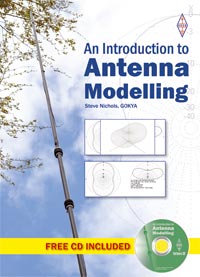But the good news is that the Sporadic E season is opening up the bands nicely, albeit for relatively short skip distances.
Look for very strong signals on 10m and 6m, which will suffer from heavy QSB. As the Es clouds move the countries you are able to work will change.
Peak times for Es are mid morning and mid to late afternoon, although look in the evening too.
Otherwise, Daytime MUFs are likely to be lower than those of winter. Night-time MUFs may be higher in summer than those in winter. Note that DX on the low bands, if possible, is unlikely to occur until around midnight or the early hours due to the late sunset.
But for now, let's look at each band and what you can expect.
On 160m (1.8MHz or Top Band), high levels of static and solar absorption mean that the band will not really support sky-wave contacts during the day. During darkness, short-skip openings may occur, but DX may be a rarity. Occasional openings can occur during the hours of darkness, especially around local midnight/early hours.
80m (3.5MHz) will generally follow the characteristics of Top Band with high levels of static, but will also provide good openings out to around 250 miles during the day. Absorption will grow to a maximum at midday for inter-G contacts. DX capabilities will be poor to fair during the hours of darkness.
40m (7MHz) will suffer from high static caused by high numbers of thunderstorms. Nevertheless, night-time openings should be reliable from sunset to sunrise. Local daytime openings will be possible on the whole. Night-time skip distances are likely to be between 500 and 2,300 miles.
20m (14MHz) is still likely to be the best DX band between sunrise and sunset, although the band will be noisier than the winter period and not as reliable for long-haul contacts. The higher MUFs at night mean that 20m may remain open during the evening to DX. Short skip may also be possible due to summer sporadic-E.
17m/15m (18MHz/21MHz) should provide a fair number of DX openings during daylight hours, especially to the southern hemisphere. Once again, 15m may struggle to open at times. Both bands are likely to close after sunset. Sporadic-E will provide good short-skip openings, predominantly in the May-June period.
12m/10m (24MHz/28MHz) are likely to be disappointing bands apart from Sporadic-E openings that will provide regular openings out to around 1,300 miles. Multi-hop sporadic-E openings are possible, providing relatively good, but short-lived paths to DX beyond this range. A typical multi-hop opening might provide brief contacts with the Middle East or USA, although they would be very hard to predict. Propagation via the F layer is unlikely to occur reliably until Autumn.
You can find HF short-path propagation prediction charts from the UK at:
http://www.infotechcomms.co/uk/propcharts/
You can also listen to Steve G0KYA's monthly HF propagation podcast on iTunes.
Steve G0KYA RSGB Propagation Studies Committee









